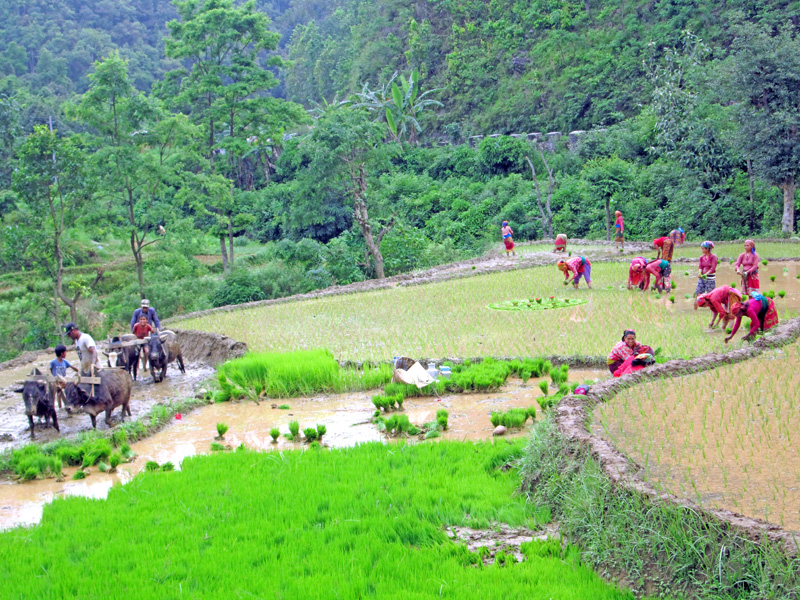Lack of rain affects paddy plantations in Madhes

Janarjan Khatri / Vijay Kumar Sah / Sarlahi: In lack of rain, only 50 per cent of paddy plantation has been completed by the end of July in Sarlahi district.
According to the Malangawa-based Sarlahi district’s Agriculture Knowledge Centre (AKC), Sarlahi has 44,500 hectares of arable land for paddy.
“Many farmers of Madhes, including Sarlahi, are dependent on rainwater for paddy plantation. However, it did not rain enough this year affecting many farmers,” said Devananda Ray Yadav, chief of AKC, Sarlahi.
The AKC informed that paddy has been planted in fields with access to water from the Manushmara and Bagmati Irrigation Canals. However, paddy has not been planted in the fields in the eastern and northern areas of the district.
“Farmers are ready to plant paddy. However, they are waiting for rain. Many have complained that the seedlings have started ageing on the seedbeds,” said Yadav.
Gopal Adhikari, a farmer from Ranigunj, an area in Ward No. 17 of Lalbandi Municipality of the district, said, “We should have already transplanted the seedlings from the seedbeds by now. However, the field is barren as there is no rain.”
“There are no canals to bring water into our lands.
All of our lands under the Chure region are barren currently. Only if it rained for a day or a half until the fields get wet, farmers would have crowded the fields for paddy plantation,” said Man Bahadur Karki, a farmer from Ward No. 12 of Ishworpur Municipality of Sarlahi.
Meanwhile, citing that the natural cycle of rain was not in their favour, many farmers of Madhes have reached the doorstep of the Dhanush Temple in Dhanushdham of Dhanusha district.
The temple was crowded on Saturday where farmers could be seen offering milk. There is a belief that offering milk in the Dhanush Temple brings rain.
“More than 500 farmers offered milk in the temple on Saturday alone. This has been a belief in this region for generations,” said Bharat Das Vaishnava, the main priest of the temple.
“Many farmers planted paddy with the help of water from pump sets. However, the planted paddy does not seem to grow properly under the scorching sun,” said Duryodhan Mahato, a local youth from nearby the temple.
The Dhanusha-based AKC informed that paddy was planted in only 30 per cent of 59,000 hectares of arable land in the district by now.
“There are still chances for rain. This is why farmers should not worry much. While it is better to plant paddy within the first two weeks of July, it can still be planted for a good yield until mid-August,” said Lalan Kumar Singh, an agriculture expert.
The lack of rain has also affected plantations in areas where canals have reached.
According to Birendra Kumar Yadav, chief of Kamala Irrigation Management Office in Dhanusha, the water level in the Kamala River has dropped due to rainwater shortage affecting irrigation in several areas.
